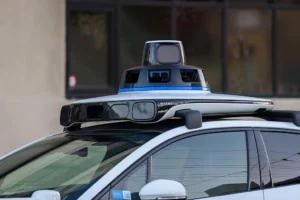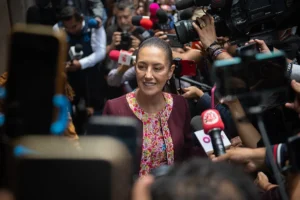Carl G. Fisher was one of the most influential figures in the transportation industry, an innovator and vehicle enthusiast, whose legacy includes what is now known as Interstate 80.
Carl G. Fisher was one of the most influential figures in the transportation industry, an innovator and vehicle enthusiast, whose legacy includes what is now known as Interstate 80. Originally from Indianapolis, Fisher had a tough childhood that led him to leave school at the age of 12. In the following years, he worked as a salesman of books, tobacco, and candy on trains departing from Indianapolis. However, in 1891, he had his first direct contact with transportation when he and his brothers opened a bicycle repair shop.
Fisher began his career in the transportation business through bicycle racing, which eventually sparked his interest in automobiles. Before fully diving into the world of cars, he and a friend perfected the acetylene headlight, which became a staple in the U.S. automotive market. After selling his headlight company to Union Carbide for $9 million, Fisher took the next step in his passionate automotive journey.

The evolution of Fisher’s ingenuity: from racetracks to the creation of Interstate 80
In the early 20th century, Fisher founded the first automobile dealership in the U.S. in Indianapolis. Despite his success and fulfilling his dream of working with vehicles, his interests went far beyond just sales. Another of his great passions was car racing, where he not only sponsored vehicles through his dealership but also competed himself.
With a visionary mind, Fisher began to focus on developing automobile race circuits that would ensure the safety of both drivers and spectators. This interest led him to create the Indianapolis Motor Speedway, a 3.2-kilometer track. Known at the time as “The Brickyard,” the circuit was inaugurated by Fisher in 1909. It featured a brick-paved surface and became the primary testing ground for automobile races.
After the success of the Indianapolis Motor Speedway, Fisher’s next project was the construction of highways in the U.S. to accommodate the growing traffic in the country.
Fisher proposed a transcontinental highway that would cross the country from Times Square in New York to Lincoln Park in San Francisco. The construction of this road began in 1913 and was named the “Lincoln Highway.” Spanning 3,389 miles, it crossed 13 U.S. states: New York, New Jersey, Pennsylvania, Ohio, Indiana, Illinois, Iowa, Nebraska, Colorado, Wyoming, Utah, Nevada, and California.
Over time and through various improvements, this highway transformed into U.S. Route 30, and in 1956, it was replaced by Interstate 80, which became the main north-south-east-west route in the country.

Pioneer of vital U.S. trade routes
Fisher was the mind behind one of the most vital trade routes in the U.S., which for over a century has served as an important corridor for both road transport and tourism in the central northern U.S. However, Fisher didn’t stop there.
Fisher’s next project was the development of a north-south route from Michigan to Miami, known as the “Dixie Highway.” Construction began in 1914 and was quickly completed in 1929. Fisher led the first caravan from Florida to Indiana. The Dixie Highway spanned 5,786 miles and, while not as direct as the Lincoln Highway, its eastern and western routes influenced the current U.S. Routes 1, 65, and 75.
As his highways gained significance, Fisher also saw the tourism potential of Miami and financed the Collins Bridge, in addition to promoting Florida’s real estate boom in the 1920s. He also proposed a tourist destination on Long Island, New York, but his plans were thwarted by the Great Depression, which led him to lose his fortune

Fisher left an important legacy in the road transportation industry, facilitating trade and offering innovative ideas. In 1971, he was inducted into the Automotive Hall of Fame and is widely recognized as the creator of the Indianapolis Motor Speedway, known as the “Greatest Spectacle in Racing.”

Wall Street Record: Transportation Stocks Boost Confidence in the Economy and Logistics
Transportation stocks in the United States have staged a strong rally so far in 2025, reflecting growing market confidence in the real economic activity behind logistics, freight movement, and mobility services more broadly.

The meaning of Hanukkah and how to celebrate it on the road
Hanukkah is a celebration of resilience and hope, and here are some ways you can take this on the road. December is one of the

Waymo under investigation for potential safety risk in school zones
A recent wave of videos has shown that some Waymo vehicles are not complying with safety regulations in school zones. The autonomous vehicle company Waymo,

Don’t Blame the Snow: The Real Causes Behind Winter Truck Accidents
Don’t Blame the Snow: Why Most Winter Truck Accidents Are Preventable

Mexico aligns with U.S. as new tariffs target Asian imports
Mexican lawmakers gave their final approval to the new tariffs on Asian imports, largely aligning themselves with the United States’ efforts to tighten trade barriers

Seven charged in New York CDL fraud case involving DMV employees
A group of DMV employees in New York allegedly manipulated the process of obtaining commercial driver’s licenses by allowing applicants who never showed up to
